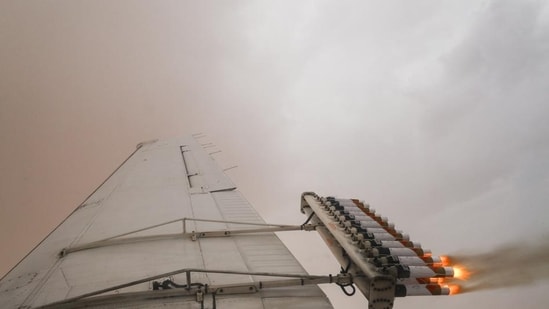Home / Weather / Cloud Seeding Trials Seek to Boost Rainfall and Curb Delhi's Air Pollution
Cloud Seeding Trials Seek to Boost Rainfall and Curb Delhi's Air Pollution
28 Oct
Summary
- Delhi conducts first cloud-seeding trial to address air pollution
- Particles like silver iodide added to clouds to promote rainfall
- Experiments show potential 17% increase in rainfall, but long-term efficacy unclear

In October 2025, Delhi conducted its first cloud-seeding trial, an experimental technique aimed at increasing rainfall and addressing the city's persistent air pollution issues. The process involves adding particles like silver iodide or chemical solutions to clouds, which act as "seeds" and promote the condensation of water vapor, leading to enhanced precipitation.
According to a report by researchers from the Indian Institute of Tropical Meteorology (IITM), Pune, cloud seeding has been explored for decades, with early experiments dating back to the 1940s. In cold clouds, where temperatures are below freezing, silver iodide particles are used, while in warmer clouds, chemical solutions like sodium chloride or potassium chloride are employed.
The IITM report suggests that past cloud-seeding experiments conducted by the institute in the 1970s showed a 17% enhancement in rainfall. However, the researchers note that no definitive conclusions could be drawn about the long-term efficacy of the technique. Globally, the effectiveness of cloud seeding remains a subject of debate, with the US Government Accountability Office citing limited evidence on its impacts.
Additionally, the seeding agents used in the process can pose environmental hazards, as the residual silver from silver iodide is considered toxic, and dry ice can contribute to greenhouse gas emissions. The IITM researchers emphasize the need for proper precautions, weather monitoring, and regulatory approvals when conducting cloud-seeding trials.



